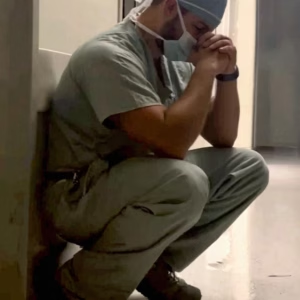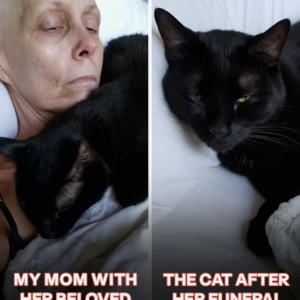What was meant to be a day of accountability inside a courtroom turned into a scene that left everyone in disbelief. A man, recently convicted of taking three lives, collapsed and died moments after the judge pronounced his sentence. The event has sparked widespread discussion about justice, human emotion, and the unpredictability of fate — raising questions that extend far beyond the walls of the courtroom.
The Day of the Verdict
It was supposed to be the closing chapter of a long and emotionally draining trial. Families of the victims had gathered early, hoping that the sentencing would finally bring them some measure of closure. Court officials described the atmosphere as tense but calm — the kind of stillness that often precedes a life-changing moment.
As the judge read the sentence, all eyes turned toward the convicted man. Witnesses later recalled that his expression shifted rapidly — first blank, then stunned, and finally filled with disbelief. Seconds later, he reached for his chest, stumbled, and fell to the floor.
Court officers and emergency medical staff immediately rushed forward. Within moments, the courtroom transformed from a place of solemn judgment into a scene of emergency response. Paramedics attempted to revive him, but despite their rapid efforts, he was pronounced dead shortly after.
Officials later confirmed that the man likely suffered a heart attack triggered by extreme emotional shock — a sudden physical collapse following intense psychological stress.
The Courtroom’s Emotional Atmosphere
People who were present described the silence that followed as “unreal.” Family members of the victims, who had come expecting closure through the sentencing, were left speechless. Some were in tears, others simply stared in disbelief.
One relative told reporters that the moment “didn’t feel real” — after years of waiting for justice, the case had ended in a way no one could have imagined. For some, there was frustration that the man had escaped the punishment the court had deemed appropriate. For others, there was confusion mixed with a strange sense of finality.
Court staff moved quickly to clear the room as paramedics continued their work. A few minutes later, the announcement of his death was made, and the room was officially closed for investigation.
Understanding Sudden Medical Collapses Under Stress
Medical experts have long documented how intense stress can trigger fatal cardiac events, especially in individuals with pre-existing heart conditions. Psychologists describe the body’s “fight-or-flight” response as a surge of hormones that prepare the body for danger. When that surge becomes too intense — as in moments of extreme shock or fear — it can cause the heart to spasm or stop altogether.
Doctors note that such cases, while rare, are not unprecedented. Over the years, there have been reports of people collapsing upon hearing life-altering news — whether it’s a tragic event, a sudden loss, or, in this case, the reading of a severe court sentence.
Authorities confirmed that a full medical investigation is underway to determine the exact cause of death. Autopsy results will help clarify whether underlying health issues contributed to the collapse or if it was purely the result of emotional shock.
Public Reactions: Justice, Accountability, and Fate
News of the courtroom incident spread rapidly across social media, sparking a range of emotional reactions. Many users expressed shock and disbelief, with some calling it “instant justice,” while others reminded the public that accountability extends beyond punishment — it’s about the lessons society takes from such events.
Legal analysts also weighed in, emphasizing that while justice was served through the legal process, the man’s sudden death does not erase the pain of the victims’ families or the need for reflection on what led to the tragedy in the first place.
Others pointed out that the case highlights the human cost of crime — not only for victims and their loved ones but also for the perpetrators, whose choices often lead to irreversible consequences.
A Closer Look at the Legal Journey
The man’s trial had been lengthy and highly publicized. Prosecutors presented detailed evidence connecting him to the deaths of three individuals, while the defense argued for leniency based on mental and emotional instability. The courtroom had seen tears, arguments, and moments of raw emotion from both sides.
When the guilty verdict was finally delivered, the judge scheduled the sentencing to take place several weeks later. Legal experts say this delay is common, giving time for pre-sentencing evaluations and for both sides to submit final statements.
During the sentencing hearing, the judge reportedly emphasized the gravity of the crimes and the pain inflicted on the victims’ families. Just as the judge announced the official sentence, the defendant showed visible signs of distress. Witnesses say he appeared to mutter something under his breath before collapsing.
The Aftermath: Emotional Fallout for Everyone Involved
In the hours following the incident, the courthouse remained closed to the public. Officials offered counseling services to the staff and families who had witnessed the collapse. The emotional weight of what transpired was evident on every face leaving the building.
For the victims’ families, the sudden turn of events left them conflicted. Some felt that fate had delivered its own form of resolution. Others expressed disappointment that they would never see the man live through the consequences of his actions.
One family member shared through a statement: “We waited years for this day. We wanted justice, but we also wanted understanding — to know why it happened. Now we will never have that answer.”
Such statements reflect the emotional complexity that often follows high-profile cases. Justice systems deal in laws and verdicts, but for the people directly involved, it’s deeply personal — a mixture of anger, grief, and sometimes unexpected compassion.
The Role of Justice Beyond Punishment
This incident reignites discussion about what true justice means. Is it purely about punishment, or does it also involve reflection, rehabilitation, and societal change? Legal scholars argue that while the man’s death marks the end of one story, it shouldn’t close the door on broader questions about violence, responsibility, and healing.
Criminal cases like this one remind us that behind every headline are real human stories — of victims, of families, and even of those who commit the crimes. Each story is layered with emotion, consequence, and the ripple effects that spread across communities.
Reactions from the Legal Community
Judges, lawyers, and court staff who heard of the incident have shared a variety of reactions. Some expressed sympathy for the man’s family, recognizing that another circle of people is now left grieving. Others pointed out the importance of maintaining health monitoring and stress management for defendants during intense legal proceedings.
Several bar associations have also suggested that future courtroom procedures could include more robust medical screening and psychological evaluation, especially for defendants who show signs of emotional or physical strain. While no system can fully predict such sudden collapses, awareness and preventive measures could help minimize risk.
Media Coverage and Ethical Reporting
As the story spread, many news outlets were careful to maintain sensitivity in their reporting. Rather than focusing on the graphic or shocking aspects of the incident, responsible journalism highlighted the human dimensions — the grief of families, the professionalism of court officers, and the broader implications for the justice system.
This shift reflects a growing understanding among media organizations that stories involving tragedy must be told with compassion and context, not sensationalism. Audiences increasingly expect responsible storytelling that informs without exploiting.
Google’s AdSense policies, for instance, encourage content creators and publishers to avoid graphic depictions of violence or suffering, instead focusing on verified facts, educational value, and constructive public dialogue. This story, when told responsibly, becomes not just a report of sudden death but a reflection on humanity and justice.
The Psychological Toll of Trials
Court trials — particularly those involving loss of life — can take a heavy toll on everyone present. Jurors, judges, lawyers, and witnesses often carry the weight of what they’ve heard long after the verdict. Psychologists explain that prolonged exposure to emotionally charged testimony can lead to stress, insomnia, and even trauma.
In this case, those who witnessed the man’s sudden collapse are being offered counseling and support services. Legal institutions increasingly recognize the importance of mental-health care, not only for victims and families but also for the professionals who serve within the justice system.
Social Reflection: The Conversation It Sparked
Beyond the courtroom, the event has prompted deep reflection within the wider community. Many see it as a sobering reminder that actions have consequences, sometimes reaching far beyond the initial crime. Others have spoken about the fragility of life and the unpredictable ways in which justice manifests.
Community leaders have urged the public to treat the event as a lesson in compassion and restraint — to remember that even in the pursuit of justice, empathy remains essential. Every life lost, whether through violence or sudden death, carries its own weight of meaning.
Balancing Accountability with Humanity
In societies governed by law, justice must always balance accountability with humanity. Punishment serves to uphold moral order, but compassion ensures that justice does not become vengeance.
The man’s death, while shocking, does not erase the pain of the victims’ families, nor does it erase the moral questions surrounding the crime. Instead, it invites reflection: What leads individuals to such devastating choices? How can communities intervene earlier to prevent such tragedies?
By asking these questions, the focus shifts from the sensational to the meaningful — from a moment of collapse to a broader search for understanding.
Authorities’ Next Steps
Officials have confirmed that a full inquiry is underway. The investigation will include medical examinations, interviews with courtroom witnesses, and a review of procedural responses by staff and emergency teams.
Preliminary reports suggest that the man had shown signs of emotional distress in the weeks leading up to sentencing. However, no prior medical issues had been recorded. The official cause of death will be released once medical examiners complete their review.
Law enforcement representatives have praised the rapid actions of court personnel and paramedics, emphasizing that all standard emergency protocols were followed.
Learning From Unexpected Events
Every unexpected incident offers lessons — not only for the justice system but also for society as a whole. This case underscores the importance of emotional preparedness during legal proceedings, the unpredictability of human stress responses, and the need for compassion in even the most difficult circumstances.
Training for courtroom staff often includes emergency medical procedures, but this event may encourage further development in crisis-response readiness. Additionally, it may prompt discussions on integrating health professionals more closely into high-stress legal environments.
Conclusion: The Fragility of Life and the Pursuit of Justice
In the end, what happened in that courtroom serves as a stark reminder of life’s fragility and the complex emotions intertwined with justice. A day that began with the intent to deliver closure ended in a sudden and unexpected tragedy.
For the victims’ families, the sense of loss remains, though the circumstances have changed. For the justice system, it’s a moment of reflection — a call to consider not only laws and verdicts but also the profound emotional realities behind them.
And for society at large, it is an opportunity to rethink how we respond to tragedy — not with sensationalism or judgment, but with understanding, empathy, and respect for every human life involved.
Justice, after all, is not only about punishment. It is about learning, healing, and ensuring that such stories remind us of our shared humanity.





